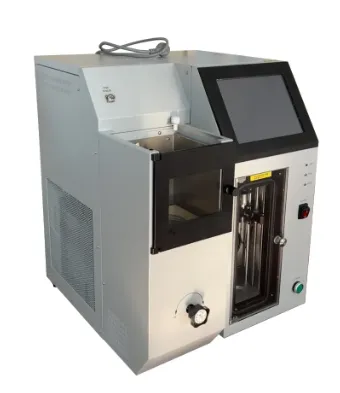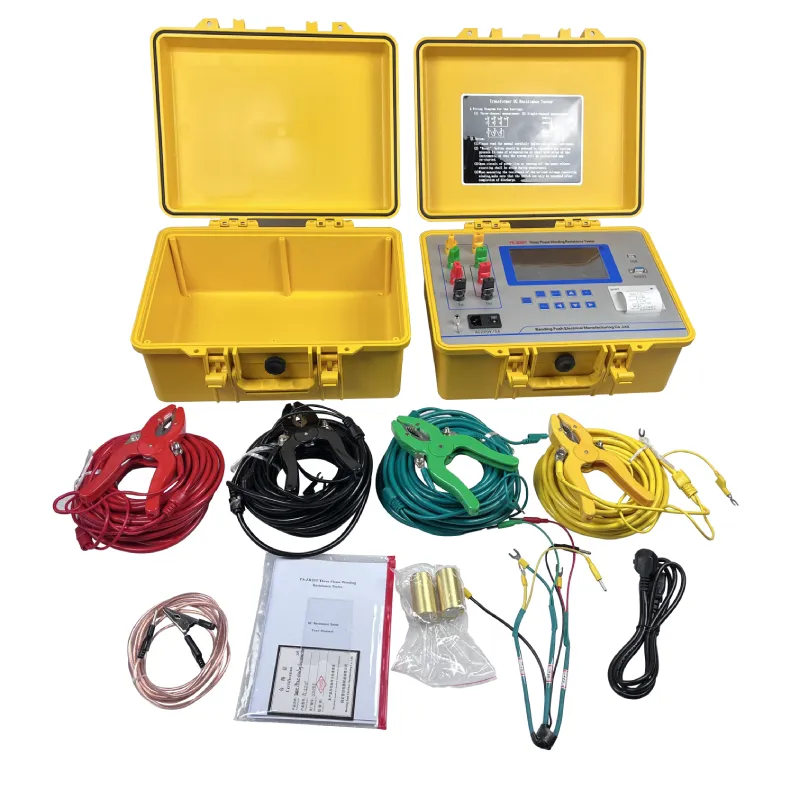 English
English



-
 Afrikaans
Afrikaans -
 Albanian
Albanian -
 Amharic
Amharic -
 Arabic
Arabic -
 Armenian
Armenian -
 Azerbaijani
Azerbaijani -
 Basque
Basque -
 Belarusian
Belarusian -
 Bengali
Bengali -
 Bosnian
Bosnian -
 Bulgarian
Bulgarian -
 Catalan
Catalan -
 Cebuano
Cebuano -
 China
China -
 China (Taiwan)
China (Taiwan) -
 Corsican
Corsican -
 Croatian
Croatian -
 Czech
Czech -
 Danish
Danish -
 Dutch
Dutch -
 English
English -
 Esperanto
Esperanto -
 Estonian
Estonian -
 Finnish
Finnish -
 French
French -
 Frisian
Frisian -
 Galician
Galician -
 Georgian
Georgian -
 German
German -
 Greek
Greek -
 Gujarati
Gujarati -
 Haitian Creole
Haitian Creole -
 hausa
hausa -
 hawaiian
hawaiian -
 Hebrew
Hebrew -
 Hindi
Hindi -
 Miao
Miao -
 Hungarian
Hungarian -
 Icelandic
Icelandic -
 igbo
igbo -
 Indonesian
Indonesian -
 irish
irish -
 Italian
Italian -
 Japanese
Japanese -
 Javanese
Javanese -
 Kannada
Kannada -
 kazakh
kazakh -
 Khmer
Khmer -
 Rwandese
Rwandese -
 Korean
Korean -
 Kurdish
Kurdish -
 Kyrgyz
Kyrgyz -
 Lao
Lao -
 Latin
Latin -
 Latvian
Latvian -
 Lithuanian
Lithuanian -
 Luxembourgish
Luxembourgish -
 Macedonian
Macedonian -
 Malgashi
Malgashi -
 Malay
Malay -
 Malayalam
Malayalam -
 Maltese
Maltese -
 Maori
Maori -
 Marathi
Marathi -
 Mongolian
Mongolian -
 Myanmar
Myanmar -
 Nepali
Nepali -
 Norwegian
Norwegian -
 Norwegian
Norwegian -
 Occitan
Occitan -
 Pashto
Pashto -
 Persian
Persian -
 Polish
Polish -
 Portuguese
Portuguese -
 Punjabi
Punjabi -
 Romanian
Romanian -
 Russian
Russian -
 Samoan
Samoan -
 Scottish Gaelic
Scottish Gaelic -
 Serbian
Serbian -
 Sesotho
Sesotho -
 Shona
Shona -
 Sindhi
Sindhi -
 Sinhala
Sinhala -
 Slovak
Slovak -
 Slovenian
Slovenian -
 Somali
Somali -
 Spanish
Spanish -
 Sundanese
Sundanese -
 Swahili
Swahili -
 Swedish
Swedish -
 Tagalog
Tagalog -
 Tajik
Tajik -
 Tamil
Tamil -
 Tatar
Tatar -
 Telugu
Telugu -
 Thai
Thai -
 Turkish
Turkish -
 Turkmen
Turkmen -
 Ukrainian
Ukrainian -
 Urdu
Urdu -
 Uighur
Uighur -
 Uzbek
Uzbek -
 Vietnamese
Vietnamese -
 Welsh
Welsh -
 Bantu
Bantu -
 Yiddish
Yiddish -
 Yoruba
Yoruba -
 Zulu
Zulu
Precision Lab Distillation Units Compact & Efficient Design
- Introduction to Laboratory Distillation Technology
- Core Components and Functional Mechanics
- Technical Advantages and Performance Benchmarks
- Comparative Analysis of Leading Manufacturers
- Customization Solutions for Specialized Applications
- Industrial Application Case Studies
- Future Developments in Laboratory Distillation

(distillation unit for lab)
Distillation units in modern laboratories: Essential purification workhorses
Distillation remains a cornerstone technique in chemical separation processes, with laboratory-scale units serving as indispensable tools across research and quality control environments. These precision instruments enable scientists to purify solvents, separate compounds, and recover high-purity substances using controlled vaporization and condensation principles. The fundamental process involves heating mixtures to specific temperatures where components evaporate at different rates, then cooling the vapor to collect purified fractions.
Contemporary lab distillation systems incorporate advanced materials and digital controls that dramatically enhance reproducibility compared to traditional setups. Borosilicate glass components withstand thermal stress while PTFE seals maintain system integrity. Industry studies indicate that automated units reduce solvent purification time by 62% compared to manual operations while simultaneously decreasing solvent waste by approximately 45%. Modern iterations include safety features like automatic shutoff valves and over-temperature protection that prevent accidents in high-temperature operations exceeding 300°C.
Core Components and Functional Mechanics
Every distillation unit for lab
applications integrates several precision-engineered components that collectively determine performance outcomes. The evaporation flask receives the initial mixture and features specialized heating mantles with PID temperature controllers maintaining ±0.5°C accuracy. Vapor travels through fractionating columns packed with ceramic saddles or stainless steel mesh that provide theoretical plates ranging from 10 to 30 depending on separation requirements. Liebig condensers with countercurrent coolant flow typically achieve 95-97% vapor condensation efficiency.
Advanced systems incorporate digital vacuum controllers managing pressures from 5 mbar to atmospheric with ±1% stability, enabling precise manipulation of boiling points. Collection receivers automatically rotate when target temperatures are reached, with multi-port designs allowing sequential fraction capture. Glassware junctions employ quick-connect fittings that maintain seal integrity even under deep vacuum conditions below 1 mbar. Modern units feature microprocessor-controlled ramping protocols that adjust temperature gradients by 0.1°C increments per minute for optimal separation of azeotropes.
Technical Advantages and Performance Benchmarks
Contemporary laboratory distillation technology delivers measurable improvements in separation efficiency and operational safety. Units with fractionating columns providing 25+ theoretical plates achieve 99.8% purity in single-pass operations for common solvents like acetone and ethanol. Energy recovery systems in advanced models reduce power consumption by 35% through vapor preheating of incoming feed stock. Automated distillation apparatuses complete purification cycles in 50-70% less time than manual systems while consuming 40% less cooling water.
Instrument control systems now incorporate self-diagnostic protocols that monitor 12+ parameters including vapor temperature differentials, condenser efficiency, and vacuum stability. Data logging capabilities record distillation curves with 0.1°C resolution for quality documentation. Current-generation units feature touchscreen interfaces with programmable methods that store 100+ protocols, eliminating operational variances between users. Material compatibility has expanded through borosilicate 3.3 glass construction that withstands thermal shocks exceeding 160°C differentials.
Comparative Analysis of Leading Manufacturers
| Manufacturer | Key Features | Temp Range (°C) | Vacuum (mbar) | Throughput (L/hr) | Theoretical Plates |
|---|---|---|---|---|---|
| Büchi Labortechnik | Automated fraction collection, IoT integration | 25-300 | 0.05 to 1013 | 1.5-3 | 20-28 |
| IKA Werke | Distillation/rectification combo modules | 20-400 | 5 to 1013 | 0.8-5 | 18-30 |
| Heidolph Instruments | Patented vacuum control, explosion-proof models | 40-340 | 10 to 1013 | 1-2.2 | 12-22 |
| G3 Apparatus | Corrosion-resistant systems, USP compliance | 30-350 | 0.1 to 1013 | 1-4 | 15-25 |
Performance benchmarks reveal significant operational differences between manufacturers. Büchi systems demonstrate superior vacuum control with pressure stability within 0.2% during fraction collection transitions. IKA modular systems achieve highest throughput at 5L/hr but require additional condenser accessories. Independent testing shows Heidolph safety-certified models maintain temperature stability within ±0.8°C even when processing flammable solvents like diethyl ether. G3 systems deliver most effective corrosion resistance with extended operation using acids and halogens. All premium systems provide distillation curve tracking, though API integration capabilities vary considerably.
Customization Solutions for Specialized Applications
Beyond standard configurations, specialized laboratory distillation equipment addresses unique separation challenges across industries. Pharmaceutical applications often require USP/EP compliant designs with electropolished SS316L receivers and extractables testing documentation. Petrochemical labs utilize micro-distillation units featuring quartz components that withstand temperatures up to 400°C for heavy fraction analysis. Essential oil extraction systems incorporate angled condensers that preserve volatile aromatic compounds through gentler condensation pathways.
Environment-focused designs now include solvent recovery systems achieving 98% capture efficiency for closed-loop operations. Explosion-proof versions rated for Class I Division 1 environments feature intrinsically safe controls and pressure-relief cascades. Customizable parameters extend to specialized column packings like Dixon rings achieving 35 theoretical plates in 40cm heights. Advanced research applications increasingly request multi-sensor probes that monitor temperature gradients at 8 column positions simultaneously for kinetic studies. Engineering labs processing silicon compounds specify Kalrez seals with corrosion-resistant nickel assemblies that withstand halogenated compounds indefinitely.
Industrial Application Case Studies
At Pfizer's analytical facility, automated single distillation unit installations reduced solvent purity testing time from 4.5 hours to 55 minutes per batch while eliminating manual oversight. The system's fractional distillation capability separated ethanol/water azeotropes to 99.92% purity meeting USP monograph requirements. Dow Chemical implemented customized vacuum distillation units with ceramic column internals that processed reactive fluorochemicals at 10 mbar pressure without contamination, accelerating catalyst research by 70%. The corrosion-resistant design prevented reactor poisoning that previously occurred monthly with standard glassware.
BASF's quality control laboratory documented 18% energy savings after retrofitting existing units with vapor-phase heat exchangers that preheated incoming solvent streams. Their customized distillation unit for lab-scale polymer analysis achieved precise monomer purification at temperatures up to 380°C. A flavor manufacturing plant eliminated flavor degradation by implementing angled condensers and controlled-cooling protocols that maintained terpene profiles intact. Their yield increased 22% over conventional distillation units while simultaneously decreasing thermal degradation products below GC-MS detection limits.
Advancing technology: Single distillation unit innovations
Emerging innovations are transforming the fundamental capabilities of laboratory distillation systems. Microwave-assisted distillation (MAD) prototypes demonstrate 70% faster separation times and 50% energy reduction for heat-sensitive compounds. These systems target molecules precisely while avoiding bulk heating. Integrated AI algorithms now optimize distillation parameters in real-time: systems from Siemens adjust temperature gradients and vacuum levels based on continuous vapor composition analysis through integrated Raman probes. These innovations achieve consistent 99.5% purity even with complex mixtures containing over azeotropes.
Microfluidic distillation chips are entering research applications requiring nanogram substance recovery. These silicon-based devices separate sub-milliliter samples with 65% less solvent loss than conventional systems. Environment-focused designs increasingly incorporate solvent recovery rates exceeding 98% in closed-loop configurations, significantly reducing hazardous waste costs. Manufacturers are advancing sustainability with heat-pump assisted systems that recover thermal energy while maintaining temperature uniformity within ±0.3°C throughout purification cycles. These innovations position laboratory distillation technology as increasingly precise, efficient, and indispensable for scientific advancement across industries.

(distillation unit for lab)
FAQS on distillation unit for lab
Q: What is a distillation unit for lab used for?
A: A distillation unit for lab is designed to separate mixtures of liquids by boiling point differences. It is commonly used in chemistry labs for purification, solvent recovery, or isolating specific compounds. These units are compact and tailored for small-scale experimental workflows.
Q: How does a single distillation unit differ from other lab distillation systems?
A: A single distillation unit typically performs one-stage separation, ideal for straightforward purification tasks. Unlike multi-stage systems, it prioritizes simplicity and cost-effectiveness for routine lab applications. It is suitable for processes requiring minimal theoretical plates or low complexity.
Q: What safety features should a distillation unit in lab have?
A: A safe distillation unit in lab should include temperature controls, pressure relief valves, and corrosion-resistant materials. Automatic shut-off mechanisms and leak detection systems are also critical. Always ensure compliance with lab safety standards like ISO or ASTM.
Q: Can a distillation unit for lab handle high-boiling-point solvents?
A: Yes, some distillation units for lab are equipped with vacuum pumps to reduce boiling points for high-temperature solvents. Check the unit’s maximum operating temperature and pressure ratings before use. Specialized models may include heated jackets for better thermal control.
Q: How to maintain a single distillation unit for optimal performance?
A: Regularly clean glassware and seals to prevent residue buildup. Inspect heating elements and condensers for wear or corrosion. Calbrate temperature sensors and replace worn parts according to the manufacturer’s guidelines.
-
Ensuring Transformer Reliability with High-Precision Turns Ratio TestingNewsJul.18,2025
-
Ensuring SF₆ Gas Safety: Introducing PUSH’s Integrated SF₆ Analyzer for Dew Point, Purity, and Decomposition MonitoringNewsJul.10,2025
-
Exploring the Main Types of Industrial Endoscopes and Their Applications Across IndustriesNewsJul.04,2025
-
Testing Equipment Industry Sees Major Advancements in 2025: Smart & Precision Technologies Lead the WayNewsJun.06,2025
-
Applications of Direct Current Generators in Renewable Energy SystemsNewsJun.05,2025
-
Hipot Tester Calibration and Accuracy GuidelinesNewsJun.05,2025



